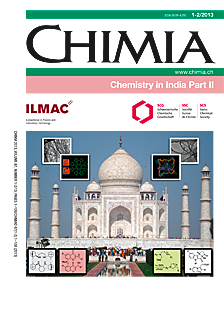Molecular Design of Synthetic Benzimidazoles for the Switchover of the Duplex to G-quadruplex DNA Recognition
DOI:
https://doi.org/10.2533/chimia.2013.39Keywords:
Anti-cancer, Benzimidazole, Cytotoxicity, Dna, G-quadruplex, Telomerase, Trap-lig assayAbstract
Benzimidazole derivatives are well known for their antibacterial, antiviral, anticonvulsant, antihistaminic, anthelmintic and antidepressant activities. Benzimidazole's unique base-selective DNA recognition property has been studied widely. However, most of the early benzimidazole systems have been targeted towards the binding of duplex DNA. Here we have shown the evolution and progress of the design and synthesis of new benzimidazole systems towards selective recognition of the double-stranded DNA first. Then in order to achieve selective recognition of the G-quadruplex DNA and utilize their potential as future anti-cancer drug candidates, we have demonstrated their selective cytotoxicity towards the cancer cells and potent telomerase inhibition ability.Downloads
Published
2013-02-27
Issue
Section
Scientific Articles
License
Copyright (c) 2013 Swiss Chemical Society

This work is licensed under a Creative Commons Attribution-NonCommercial 4.0 International License.
How to Cite
[1]
Chimia 2013, 67, 39, DOI: 10.2533/chimia.2013.39.







